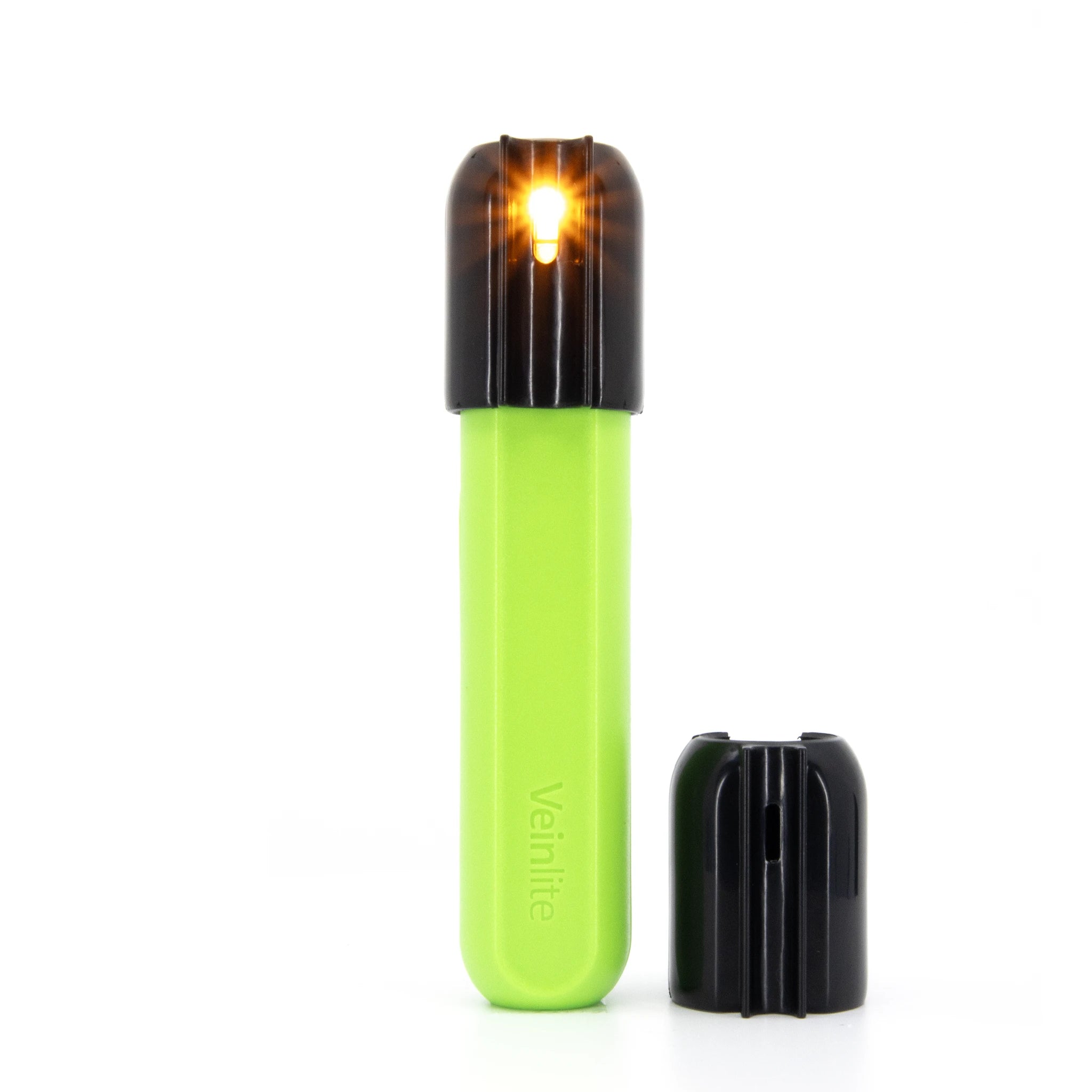

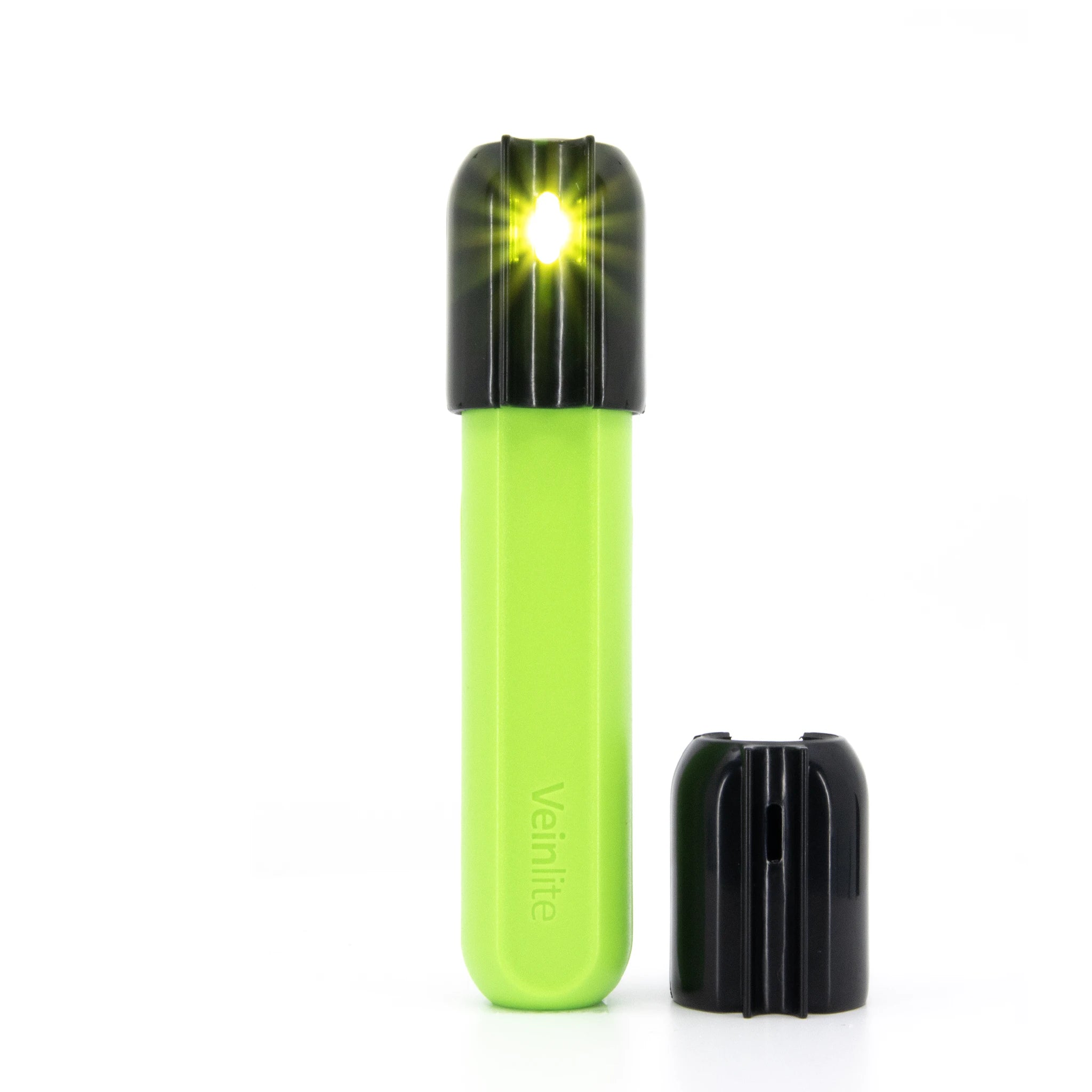


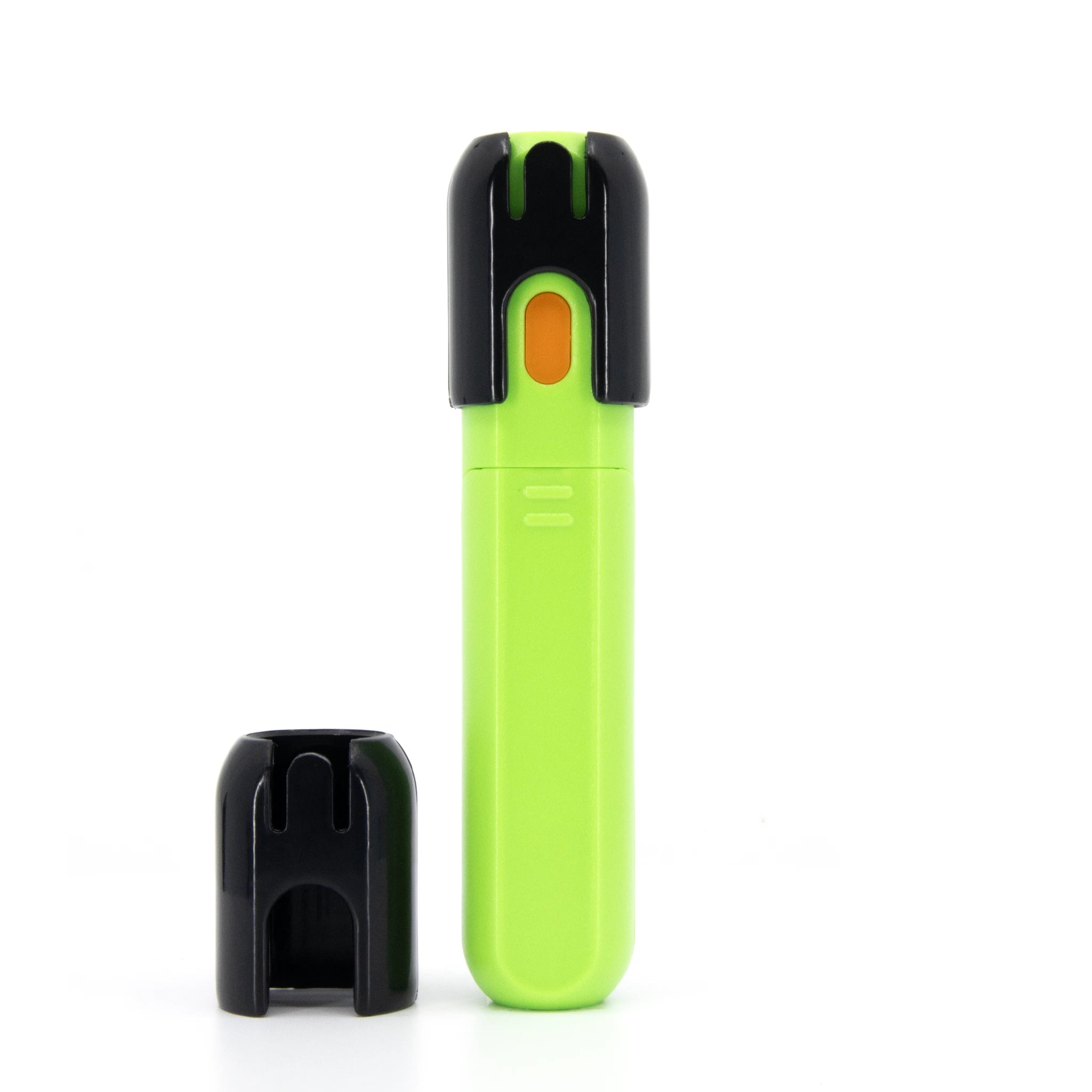
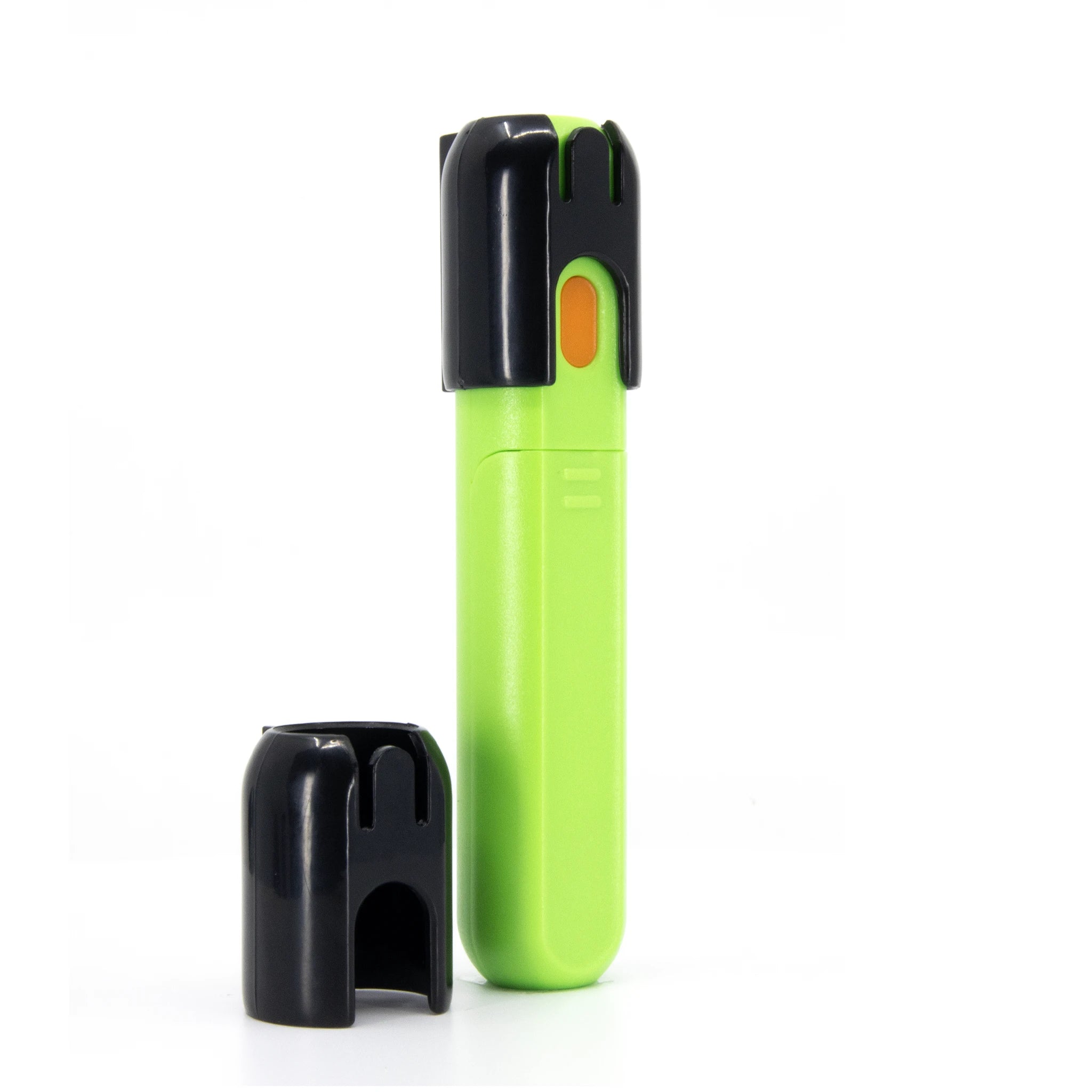
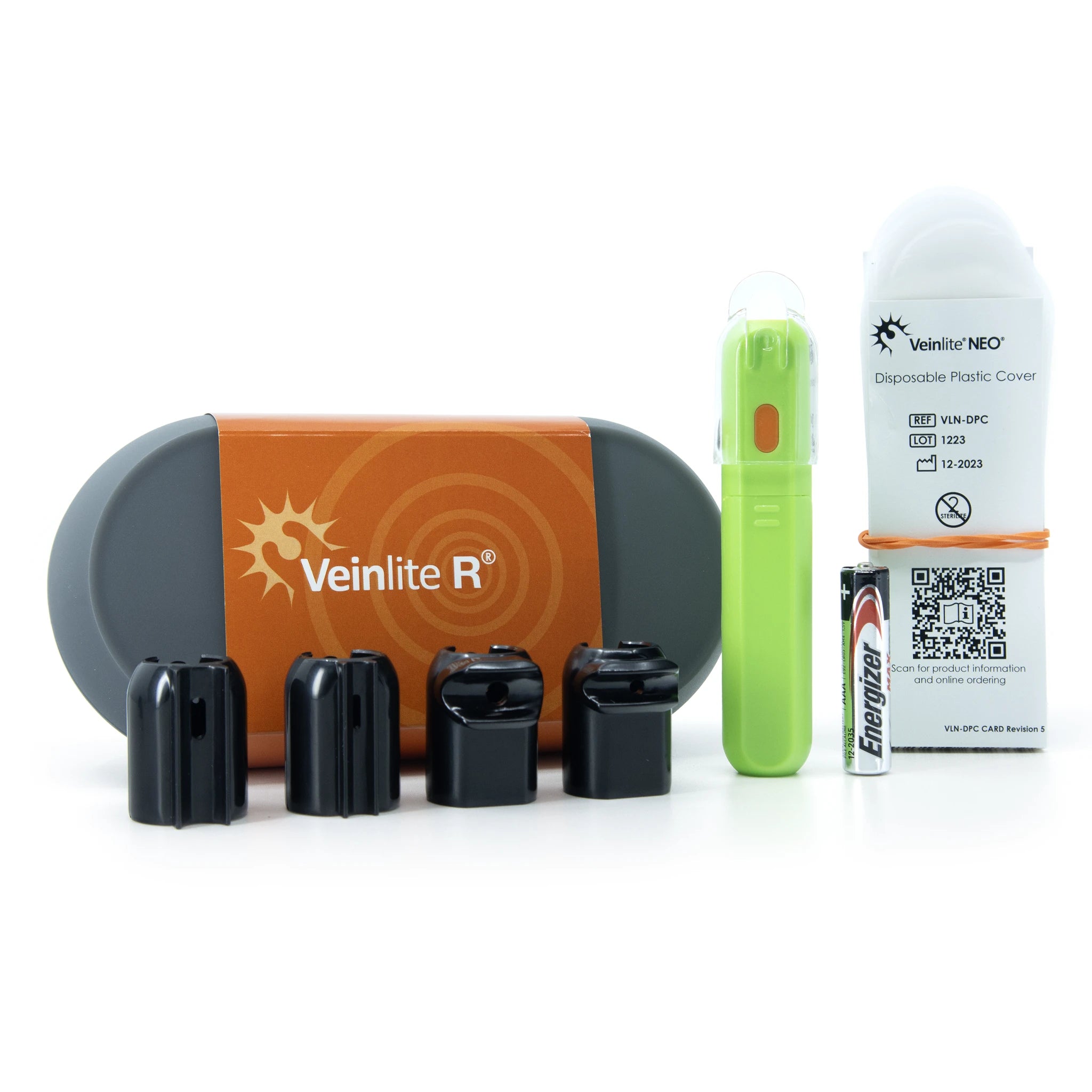
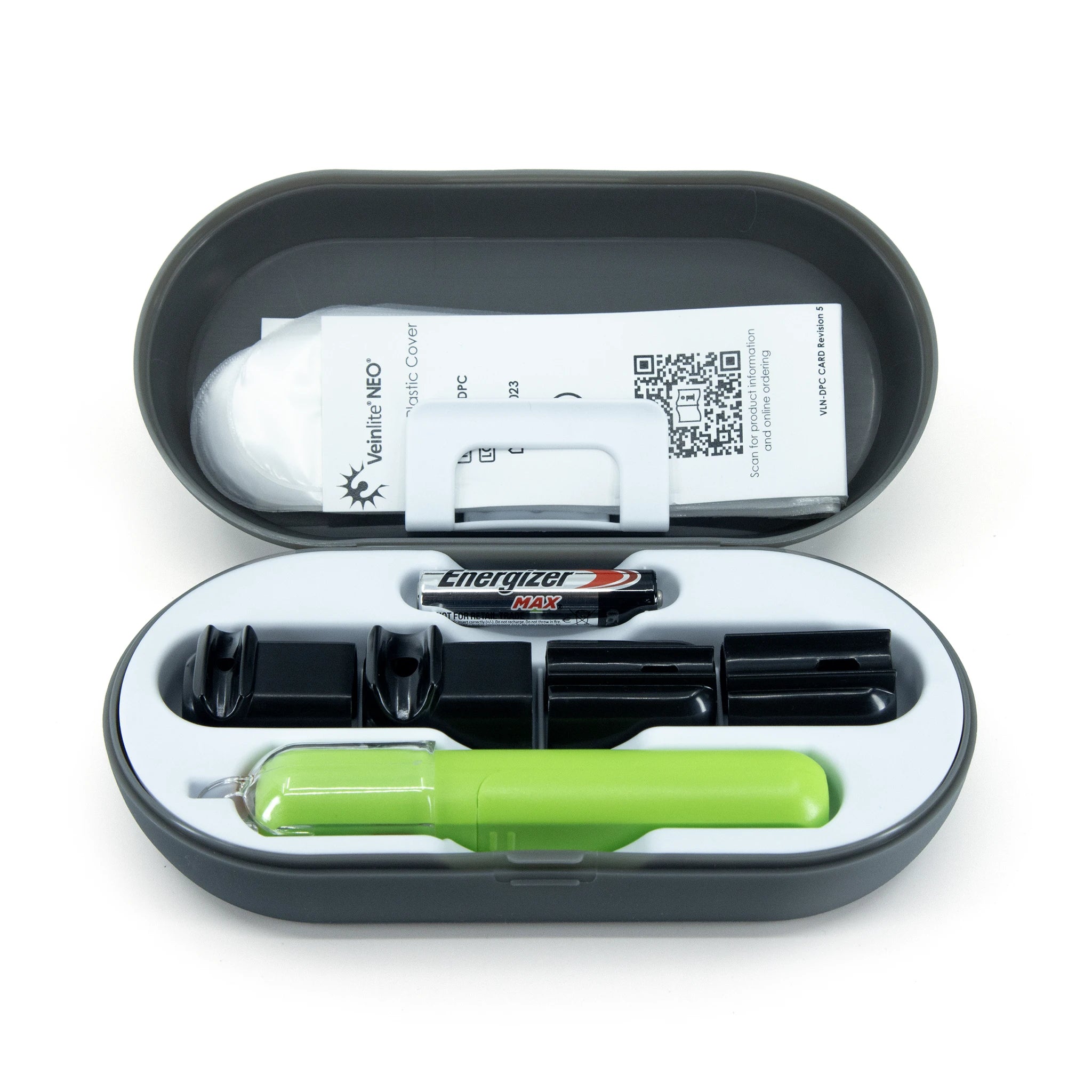

Veinlite R®
VLR
ANIMAL RESEARCH
Finding and accessing veins and arteries in mice and rats has never been easier!
Veinlite R is designed to simplify venous and arterial access in mice and rats, ideal for the research market. Veinlite R is leading the way to better intravenous access in Research. It is simple to use, affordable and effective. The included tail adapters make stabilizing and securing the tail during access effortless. Powered by one AAA battery, Veinlite R features a compact form factor. You can switch light color and intensity for imaging veins, arteries, and examination. Attach a lanyard to the cap for easy access anytime.
- Find and access veins and arteries easily.
- This portable device features one-handed operation for ease of use – Integrated color switching and brightness controls.
- With Veinlite R, technicians can instantly identify veins and arteries, secure the tail, and make an efficient stick. No wasted time, supplies, or unnecessary trauma.
- Meets INS & CDC Guidelines for Infection Control – Uses affordable disposable plastic covers to prevent contamination.
- Veinlite R features 3 different colored lights: green for arteries, orange for veins, and a white exam light.
Pairs well with
In stock! Ships within 1-2 business days.
30-day risk-free trial
FREE 5-Year Extended Warranty

Veinlite R®
If you have any questions, you are always welcome to contact us. We'll get back to you as soon as possible, within 24 hours on weekdays.
-
Shipping Information
Use this text to answer questions in as much detail as possible for your customers.
-
Customer Support
Use this text to answer questions in as much detail as possible for your customers.
-
FAQ’s
Use this text to answer questions in as much detail as possible for your customers.
-
Contact Us
Use this text to answer questions in as much detail as possible for your customers.

What's in the R Kit?
FAQs
Please read our FAQs page to find out more.